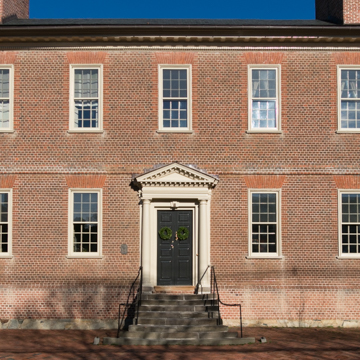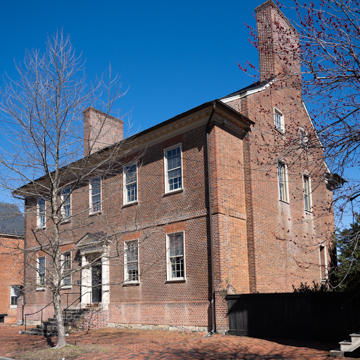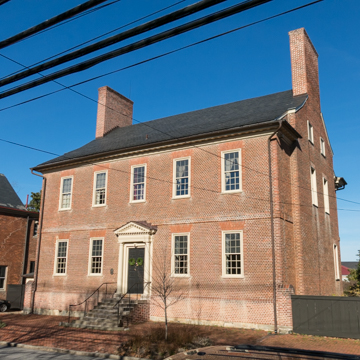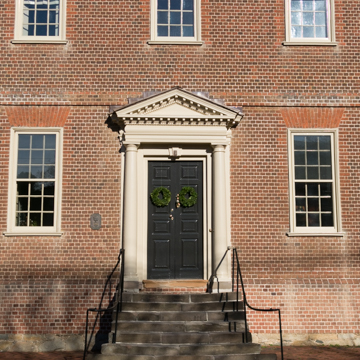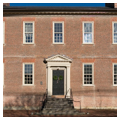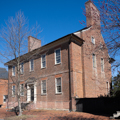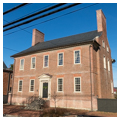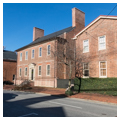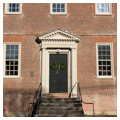Built for John Ridout, secretary to provincial governor Horatio Sharpe, this is one of the most sophisticated colonial houses in Annapolis. It successfully combines such emerging architectural characteristics as the Annapolis Plan and two-story brick construction with street-front and garden facades of indulgent all-header bond brick in an elegant Georgian house of grand proportion. It likewise encompasses a decorative water table and belt course, jack-arch lintels, massive slab chimneys, and unusual faux-pavilion side projections. It is elevated above a terraced garden, accessible from the drawing room via a Doric portico and from the service areas in the ground-level basement. Indicative of the Annapolis Plan and its emphasis on garden access, the elaborated rear facade includes a second-story Palladian window so generous in proportion that it pierces the roofline.
The first-floor rooms radiate from an entrance hall with an open-string stairway set off from the hall, beyond an arched opening, and flanked by small private rooms. The drawing room is the largest, overlooking the garden. The interior finishes are varied and complex, with some of the finest plaster cornices in the Chesapeake region. The cellar retains its kitchen, servants’ hall, pantry, and storeroom. Adjacent is Ridout’s former brick carriage house, now a residence, and his speculative town houses known as Ridout Row.
While the builder/designer is not known, the house has been in the Ridout family since its construction. John Ridout is said to have built this house in an effort to win the hand of Mary Ogle, and was in competition with Governor Sharpe, who was also building a house in hopes of obtaining the same privilege. John married Mary in 1764 and would later inherit Sharpe’s Whitehall. In 1773–1774, Ridout built adjoining row houses as an investment property. Ridout House is among the few great Annapolis houses still remaining in private hands and retaining its terraced garden. It forms an important part of the architectural evolution of Annapolis, a period in which many of the city’s finest houses were erected, including the Brice, Chase-Lloyd, and Hammond-Harwood houses.
References
Carson, Cary, and Carl R. Lounsbury. The Chesapeake House: Architectural Investigation by Colonial Williamsburg. Chapel Hill: University of North Carolina Press, 2013.
“John Ridout House,” Annapolis, Anne Arundel County, Maryland. Historic American Buildings Survey, National Park Service, U.S. Department of the Interior, 1964. From Prints and Photographs Division, Library of Congress (HABS No. Md-91).
Miller, Marcia, and Orlando Ridout, V, et. al. Architecture in Annapolis. Annapolis: Vernacular Architecture Forum and Maryland Historical Trust Press, 1998.






